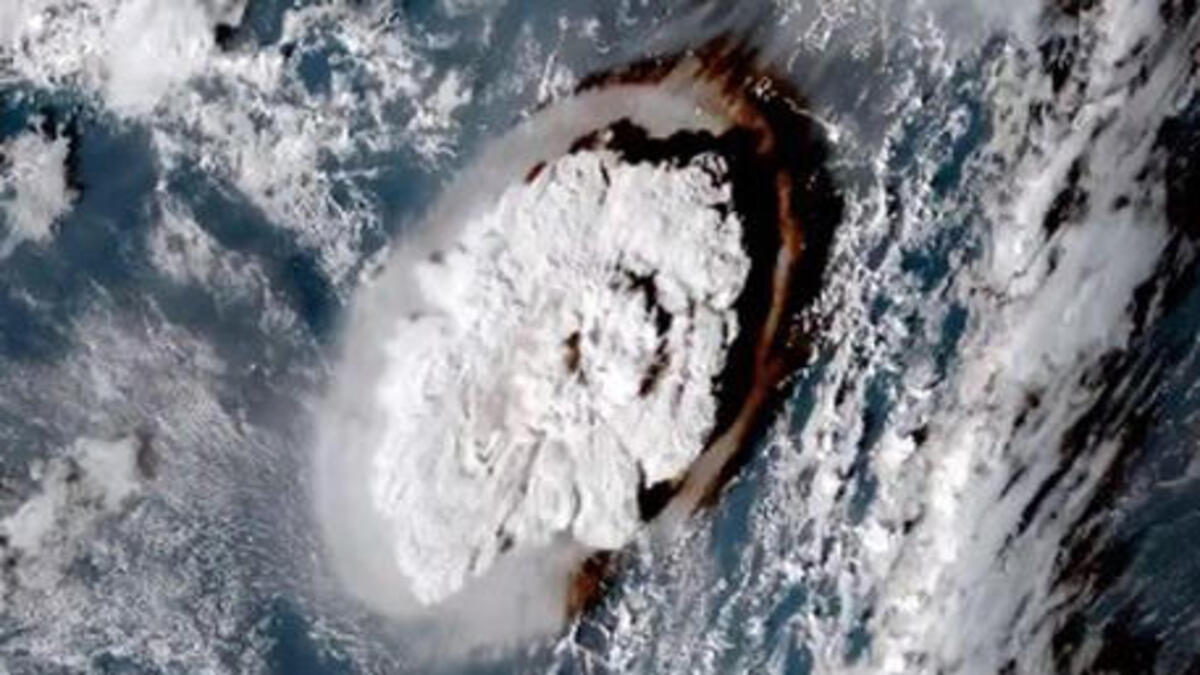Scientists say the 2022 Tonga volcano eruption created a “super bubble of plasma” that disturbed satellites.
The volcanic eruption in Tonga in January 2022 was so large that it created waves in the upper atmosphere. It was one of the largest explosions in modern history and impacted GPS in Australia and Southeast Asia. As they describe in a new study, the eruption caused a super ‘plasma bubble’ over northern Australia that lasted for hours. While most people have a GPS (global positioning system) receiver on their devices (such as sat navs and smartphones), not many people know how GPS actually works. Basically, our devices listen to radio signals transmitted by satellites orbiting the Earth. Using those signals, they calculate their position relative to satellites, allowing us to orient ourselves and find that nearby pub or bar. The radio signals received by our devices are influenced by the earth’s atmosphere (in particular by the layer called the ionosphere ), which degrades the location accuracy. Common devices are only accurate to within tens of meters. However, new and improved satellite positioning systems used in mining, agriculture and construction can be accurate to within ten centimeters. The only problem is that these systems need time to lock in their location and this can take thirty minutes or more. This precise satellite positioning works by accurately modeling the errors caused by the earth’s ionosphere. But whenever the ionosphere is disturbed, it becomes complicated and difficult to model. For example, when a geomagnetic storm (a disturbance in the solar wind affecting the Earth’s magnetic field) occurs, the ionosphere becomes turbulent and radio waves passing through it are scattered, such as visible light bending and scattering when you look down in a lake in choppy conditions. Recent studies have shown that the Hunga Tonga-Hunga Ha’apai volcano eruption caused unstable conditions in the ionosphere that lasted for several days. The sizes of the waves it generated in the ionosphere were similar to those created by geomagnetic storms. Although these waves affected GPS data worldwide for days after the eruption, their impact on positioning was quite small compared to another type of disturbance in the ionosphere: a “super plasma bubble” that formed on the wake of the eruption. The ionosphere is a layer of the earth’s atmosphere at altitudes of about 80-800 kilometers. It comprises gases with many electrically charged particles, making it a “plasma”. In turn, equatorial plasma bubbles are plasma disturbances in the ionosphere that occur naturally at night over low-latitude regions. Such plasma bubbles occur regularly. They are formed due to a phenomenon called “generalized Rayleigh-Taylor instability”. It is similar to what happens when a heavy fluid sits on top of a less heavy fluid and spots of this lighter fluid rise into the heavy fluid as “bubbles”.
When it comes to disturbances in the ionosphere, however, even plasma is controlled by magnetic and electric fields. As they rise, the plasma bubbles form oddly shaped structures resembling cacti or upside-down tree roots. Due to the Earth’s magnetic field, these structures expand as the bubble grows above the equator. The result is that high-altitude bubbles also reach higher latitudes. Typically, plasma bubbles reach a few hundred kilometers above the equator, reaching latitudes between 15 and 20 degrees north and south. Scientists have detected a super bubble of plasma over Southeast Asia shortly after the Tonga eruption. It is estimated to be similar in size to the previously reported rare super bubbles. Earth’s magnetic field carried this disturbance south, where it remained for a few hours over Townsville in northeastern Australia. To date, this is the southernmost point a plasma bubble has been observed over Australia. While very rare, such superbubbles are known to have occurred in northern Australia, but have not been directly observed prior to this event. The rollout of GPS stations across northern Australia has only recently made this type of observation possible. It is understood that the waves from the volcano’s eruption disturbed the winds in the upper atmosphere, altering the flow of plasma in the ionosphere and giving rise to the plasma super bubble. Our study found that the bubble caused significant delays in the use of accurate GPS in Northern Australia and Southeast Asia. In some cases, getting a lock on the GPS location took more than five hours longer due to the plasma bubble. While we understand much about the ionosphere, our ability to predict its disturbances is still limited. Having multiple GPS stations is not only beneficial to improve positioning and navigation, but also fills the gaps in monitoring the ionosphere. Tonga’s eruption was far from a typical “space weather” event caused by the Sun. But its impact on the upper atmosphere and GPS highlights the importance of understanding how the environment affects the technologies it affects. we rely.
